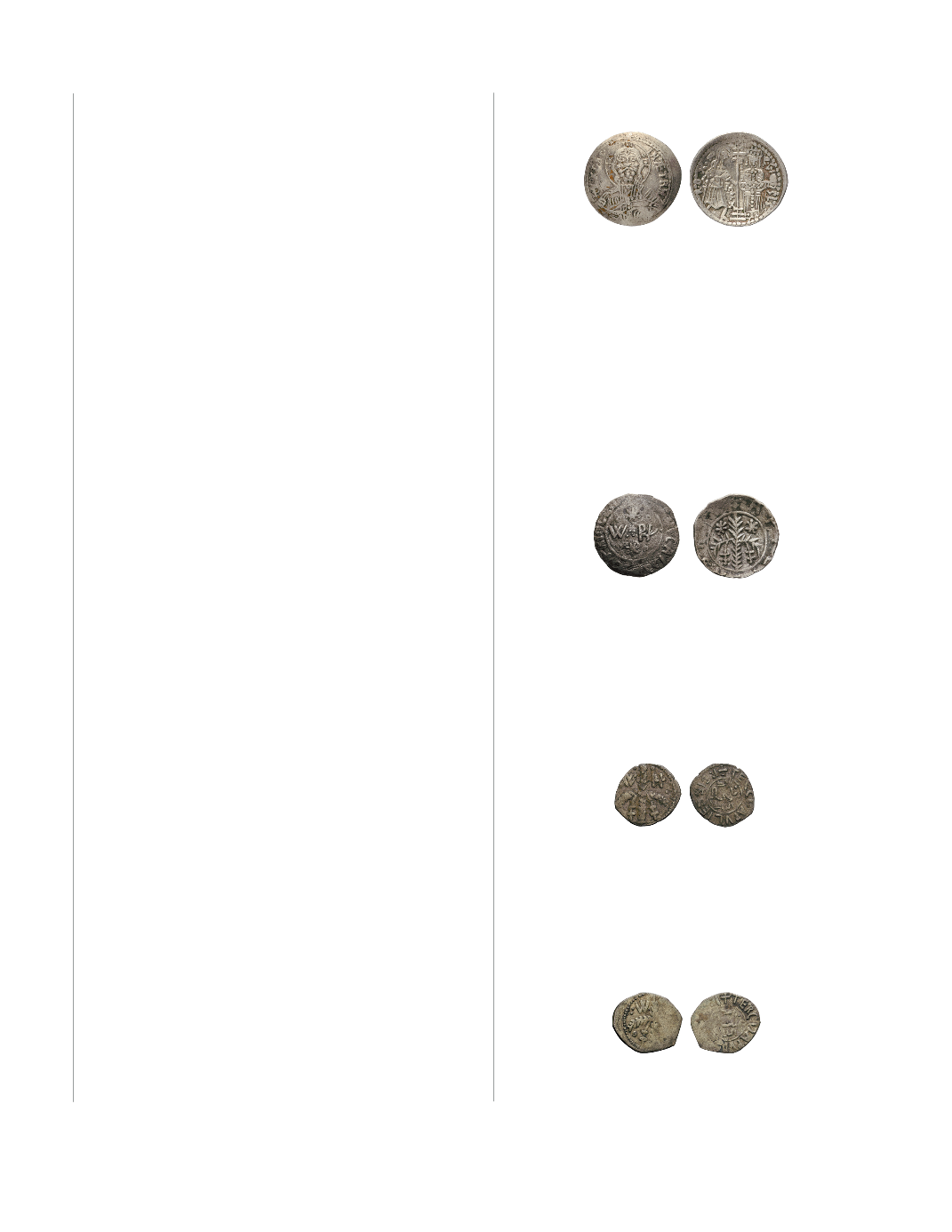

117
The following collection was graciously attributed
by Gordon Andreas (Andy) Singer, a prominent
numismatist specializing in the coinage of medieval
Europe. A collector since the mid-1950s, Andy
earned a Ph.D. in medieval history in 1974. Andy
has published many articles, has taught for several
colleges and has worked as an editor/bibliographer
for the American Historical Association. In 1978 he
became a full time professional numismatist.
A Collection of Sicilian and Neapolitan Coins
Well known for their wonderful Hellenistic coinage,
the cities of the southern part of the Italian penin-
sula and the island of Sicily continued to contribute
greatly to the development of coinage throughout
the medieval and Renaissance periods. While
exhibiting much different artistry, these coinages
illustrate the political and economic history of the
struggle to control the Mediterranean following the
demise of the Roman Empire.
Sicily and Naples, the two kingdoms which emerged
in southern Italy, at times a single entity and at
others two separate ones , were ruled by Romans,
Byzantines, and Arabs before being succeeded by
western European dynasties. Norman, German,
French, Aragonese and Spanish kings and queens
occupied the thrones from the eleventh to the nine-
teenth centuries. After the two kingdoms split in
1282, the Neapolitans continued to use the title
“King of Sicily”, thus there were “Two Sicilies”,
which remained official after the reunification in the
15th century.
The collection which follows includes examples of
Sicilian and Neapolitan coinages from the 12th to
the 17th century and reflects the cultural, political,
and economic influence and history of southern Italy
during this period. The Norman coinage shows
both Greek and Arabic influence, which was often
combined on the same coin. The Hohenstauffens
played a major role in reintroducing gold coinage
in the West. French influence is reflected in the
Angevine coinage, which spread all the way to the
Levant. Later the Aragonese and Spanish intro-
duced the numismatic art of the Renaissance.
We hope you will enjoy viewing, studying, and per-
haps collecting this historic coinage which is pre-
sented on the following pages.
Sicily: The Norman Kings
524.
Roger II
. 1105-1154, as King from 1130. Ducalis,
22.2mm, 2.33g. Palermo, regnal year 10 (1140).
Obv: IC XC INAERTRH, bust of Christ facing.
Rx: R DX AP RR SLS, AN R X vertically to left
of cross, King Roger and his son Duke Roger
standing, holding patriarchal cross. This and some
other early Sicilian silver coins were struck in the
Byzantine influenced scyphate method. Rare. MEC
212, Spahr 72, MIR 432. VF-EF, some light surface
deposits
$600
525.
William II
. 1166-1189. Apuliensis,19.4mm, 2.22g.
Palermo. Obv: SICIL DVCAT APVL’7 PRINC
CAP:, W RX in center, stars above and below. Rx:
+APVLIENSIS, palm tree with dates, two stars
above. Scyphate, as above, very rare. MEC 396,
Spahr 110, MIR 435. VF
$750
526.
Tercius apuliensis, 0.85g. Palermo. Obv: W.
RX above palm tree with dates. Rx: TERCI7
APVLIENSIS:I around Arabic legend in center.
MEC 397, Spahr 112, MIR 440. VF
$150
527.
Tercius apuliensis, 0.82g. Palermo. Same type as
above, but with weakly struck areas. MEC 397,
Spahr 112, MIR 440. Fine
$75


















